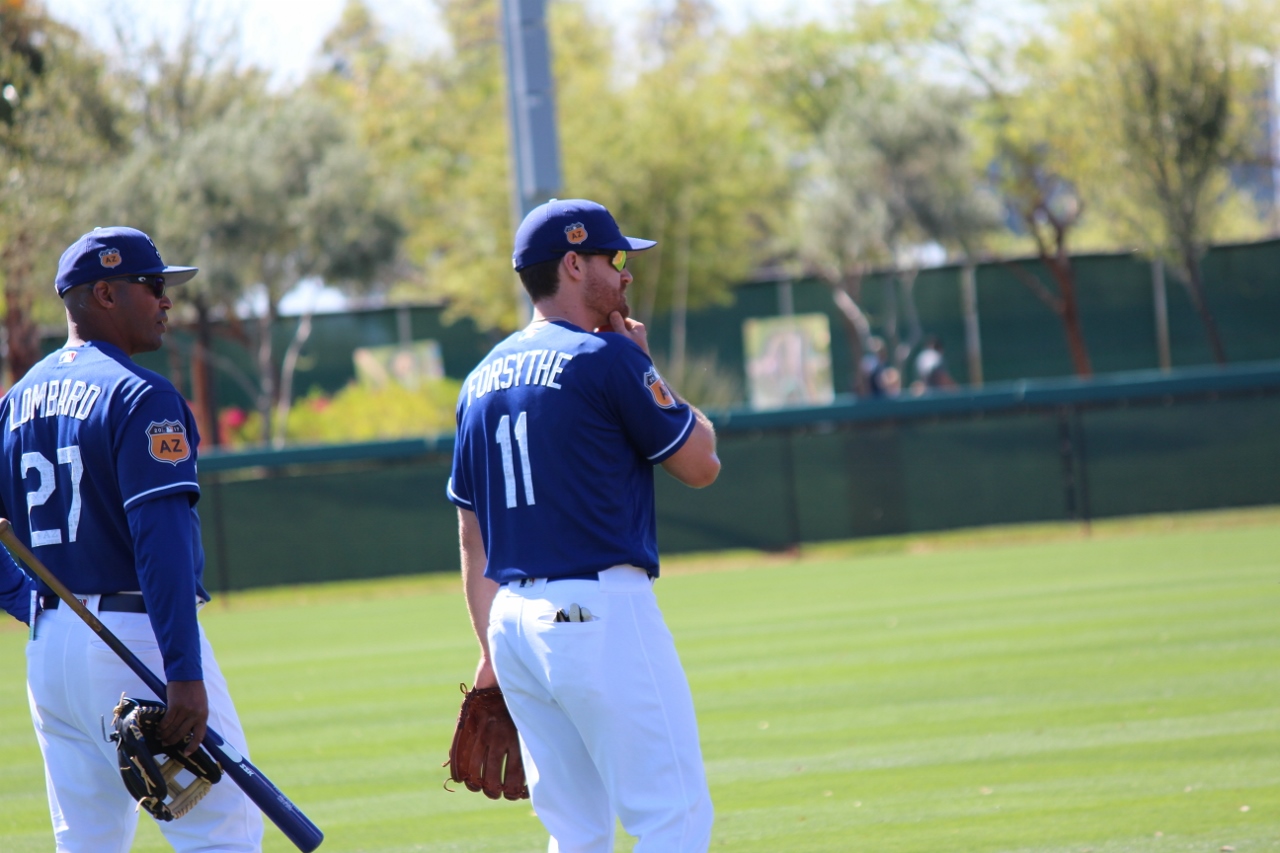
Logan Forsythe has struggled to adjust to the National League thus far in 2017. As recently as the middle of last month, he was hitting below .200, and he’s currently at a mediocre .245/.365/.327/.692. Needless to say, it’s not what you want from a player the Dodgers traded one of their top prospects for (who’s also been injured and ineffective this year, but still).
The struggles have been a surprising outcome from Forsythe, who over the last two seasons and almost 1200 plate appearances, has put up a .273/.347/.444/.791 line with above-average defense, becoming a solid 3-4 WAR player in that period.
So what happened?
Forsythe has seen his strikeout rate balloon a bit in 2017, going from 18.0% and 22.4% the last two years to 26.0%. The weird part is that his swinging strike rate is 7.1%, which is well below league average, in line with his career norm, and lower than it was in 2016. What helps explain it is his walk rate also has skyrocketed from 8.9% and 8.1% to 14.6%, not necessarily because his eye has gotten better but just because he’s taking a lot of pitches now (and a lot of strikes).
Actually, Forsythe is the most passive hitter in the majors (minimum 150 PA), swinging at just 32.1% of pitches. Perhaps even more telling is that he swings the second-least amount (J.J. Hardy, 50.0%) in the majors at pitches in the strike zone at just 50.5%. Forsythe has always been a selective hitter, but this is noticeably different than his career 40.0% swing rate and 59.1% swing rate at strikes. As a result, Forsythe is watching strike three more, getting buried in difficult counts more, and is letting more hittable pitches get by him, which helps explain his almost 100-point drop in OPS and the odd-for-him peripherals.
——
All that doesn’t mean the Dodgers should give up on Forsythe, however. Remember, it’s a new league with new pitchers, and just as he was getting hot in the middle of April, he broke his toe and was out for over a month. More relevantly, he’s been getting more aggressive with time, as his 28.6% swing rate (46.3 strike swing rate) in April increased to 32.0% in May (50.7%) and then 33.6% in June (52.7%). Then in the last week, Forsythe has been on a tear, slashing .500/.583/.600/1.183 with four walks and two strikeouts … and he’s also swung at 41.4% of pitches and 63.3% of pitches in the strike zone. So while concern over Forsythe has definitely been valid, there’s also promising trends that indicate the adjustments we’ve been waiting for are finally coming along, and it’s something to watch in July.
Of course, his power numbers has been the other concern since he has just two homers and seven doubles this year after 20 homers, 24 doubles, and four triples in 2016, and if the lack of pop persists we should look at it. However, it’s hard to drive the ball when you’re taking the pitches you’re supposed to be driving and you’re always battling uphill after falling behind. Thus, I figure that as he solves the swing rate issues, the power should return as well.
Here’s hoping, because a productive Logan Forsythe makes an already deep and versatile Dodgers lineup that much more dangerous.
 Dodgers Digest Los Angeles Dodgers Baseball Blog
Dodgers Digest Los Angeles Dodgers Baseball Blog